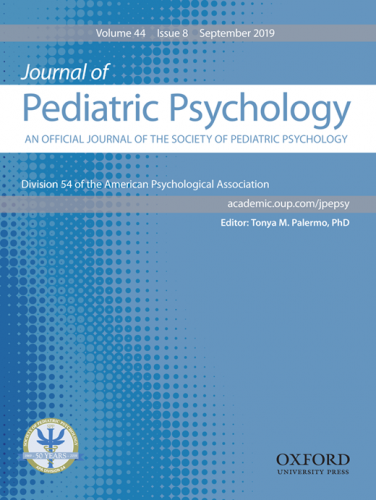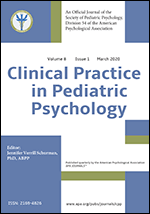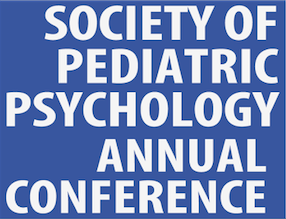Assessment Resource Sheet : Health-related Quality of Life and Functional Impairment
Measures of health-related quality of life (HRQOL) are designed to measure an individual’s perception of the impact of an illness, symptoms and its consequent treatment on their physical, psychological and social well-being, while measures of functional impairment assess limitations in a child’s ability to perform age-appropriate activities relevant to daily life, such as physical, social, and interpersonal activities. These tools can be classified as: (1) generic HRQOL instruments, (2) condition-specific HRQOL instruments and (3) functional impairment instruments. This list of evidence-based measures was originally published in the Journal of Pediatric Psychology (Palermo et al., 2008). All measures are classified as well-established assessment, approaching well-established assessment, and promising assessment. Criteria for each of these classifications is included in the Palermo et al. (2004) paper. Information on where to obtain the measure is included in parentheses after the name of each measure. Age ranges (when available) are included in parentheses. Central references are included after each table (and are cited with superscripts in the tables).
General HTQOL Instruments
|
Assessments |
Well-established |
Approaching |
Promising |
|
Child Health and Illness Profile (CHIP)1 (ages 6-17) |
X | ||
|
Child Health Questionnaire (CHQ)2 (ages 5-18) |
X | ||
|
Pediatric Quality of Life Inventory (PedsQL)3 (ages 2-18) |
X | ||
|
Youth Quality of Life (YQOL)4, 5 (ages 12-18) |
X |
Condition-Specific HRQOL Instruments
|
Assessments |
Well-established |
Approaching |
Promising |
|
Child Health Assessment Questionnaire (CHQQ) (Arthritis)6 (ages 8-19) |
X | ||
|
Cystic Fibrosis Questionnaire Revised (CFQ-R)7, 8 (ages 6-adult) |
X | ||
|
Diabetes Quality of Life for Youth (DQOLY)9 (ages 10-21) |
X | ||
|
Juvenile Arthritis Functional Assessment |
X | ||
|
Report (JAFAR)10 (ages 7-18) |
|||
|
Miami Pediatric Quality of Life Questionnaire (MPQLQ) (Oncology)11 (ages 1-18) |
X | ||
|
Pediatric Asthma Quality of Life Questionnaire (PAQLQ)12 (ages 7-17) |
X | ||
|
Pediatric Oncology Quality of Life Scale (POQOLS)13 (ages 2-19) |
X | ||
|
Play Performance Scale for Children (PPSC)14 (ages 6 months-16 years) |
|||
|
Quality of Life Headache in Youth (QLH-Y)15 (ages 12-18) |
X |
Functional Impairment Instruments
|
Assessments |
Well-established |
Approaching |
Promising |
|
Child Activity Limitations Interview (CALI)16 (ages 8-16) |
X | ||
|
Functional Disability Inventory (FDI)17 (ages 8-17) |
X | ||
|
Functional Status (II) R18 (ages 0-16) |
X |
1. Starfield, B., Riley, A.W., & Green, B.F. (1999). Manual for the child health and illness profile: Adolescent edition (CHIP-AE). Baltimore: The Johns Hopkins University.
2. Landgraf, J.M., Abetz, L., & Ware, J.E. (1996). The CHQ user’s manual (1st ed.). Boston, MA: The Health Institute, New England Medical Center.
3. Varni, J.W., Seid, M., & Rode, C.A. (1999). The PedsQL: Measurement model for the pediatric quality of life inventory. Medical Care, 37(2), 126–139.
4. Edwards, T.C., Huebner, C.E., Connell, F.A., & Patrick, D.L. (2002). Adolescent quality of life, Part I: Conceptual and measurement model. Journal of Adolescence, 25(3), 275–286.
5. Patrick, D.L., Edwards, T.C., & Topolski, T.D. (2002). Adolescent quality of life, Part II: Initial validation of a new instrument. Journal of Adolescence, 25(3), 287–300.
6. Singh, G., Arthreya, B., Fries, J.F., & Goldsmith, D.P. (1994). Measurement of health status in children with juvenile rheumatoid arthritis. Arthritis & Rheumatism, 37, 1761–1769.
7. Quittner, A.L., Buu, A., Messer, M.A., Modi, A.C., & Watrous, M. (2005). Development and validation of the Cystic Fibrosis Questionnaire in the United States: A health-related quality-of-life measure for cystic fibrosis. Chest, 128(4), 2347–2354.
8. Modi, A.C., & Quittner, A.L. (2003). Validation of a disease-specific measure of health-related quality of life for children with cystic fibrosis. Journal of Pediatric Psychology, 28(8), 535–545.
9. Ingersoll, G.M., & Marrero, D.G. (1991). A modified quality of life measure for youths: Psychometric properties. Diabetes Care, 9, 114–118.
10. Howe, S., Levinson, J., Shear, E., Hartner, S., McGirr, G., Schulte, M., et al. (1991). Development of a disability measurement tool for juvenile rheumatoid arthritis. The Juvenile Arthritis Functional Assessment Report for children and their parents. Arthritis and Rheumatism, 34(7), 873–880.
11. Armstrong, F.D., Toledano, S.R., Miloslavich, K., Lackman-Zeman, L., Levy, J.D., Gay, C.L., et al.
(1999). The Miami Pediatric Quality of Life Questionnaire: Parent scale. International Journal of
Cancer Supplement, 12, 11–17.
12. Juniper, E.F., Guyatt, G.H., Feeny, D.H., Ferrie, P.J., Griffith, L.E., & Townsend, M. (1996). Measuring quality of life in children with asthma. Quality of Life Research, 5, 35–46.
13. Goodwin, D.A.J., Boggs, S.R., & Graham-Pole, J. (1994). Development and validation of the Pediatric Oncology Quality of Life Scale. Psychological Assessment, 6, 321–328.
14. Lansky, L.L., List, M.A., Lansky, S.B., Cohen, M.E., & Sinks, L.F. (1985). Toward the development of a play-performance scale for children (PPSC). Cancer, 56, 1837–1840.
15. Langeveld, J.H., Koot, H.M., Loonen, M.C., Hazebroek-Kampschreur, A.A., & Passchier, J. (1996). A quality of life instrument for adolescents with chronic headache. Cephalalgia, 16(3), 183–196; discussion 137.
16. Palermo, T.M., Witherspoon, D., Valenzuela, D., & Drotar, D. (2004). Development and validation of the Child Activity Limitations Interview: A measure of pain-related functional impairment in school-age children and adolescents. Pain, 109(3), 461–470.
17. Walker, L.S., & Greene, J.W. (1991). The Functional Disability Inventory: Measuring a neglected dimension of child health status. Journal of Pediatric Psychology, 16(1), 39–58.
18. Stein, R.E.K., & Jessop, D.J. (1990). Functional Status II (R) a measure of health status. Medical Care, 28, 1041–1055.



